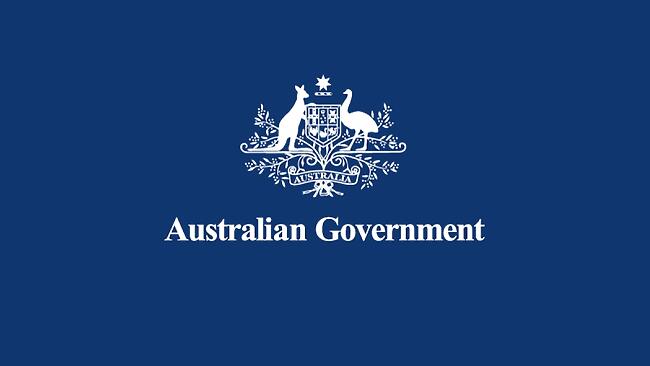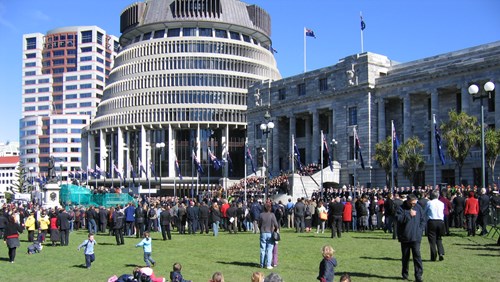
Launch of the Lighthouse Project Expansion
Acknowledgments
Good morning, and thank you for the introduction, Chief Justice.
I begin by acknowledging the traditional custodians of the land on which we meet today, the Gadigal people of the Eora Nation, and pay my respects to their Elders past and present.
I would like to extend that respect to other Aboriginal and Torres Strait Islander peoples present today.
And I reiterate the Government’s commitment to implementing the Uluru Statement from the Heart in full – beginning with a referendum to enshrine an Aboriginal and Torres Strait Islander Voice in the Australian Constitution during this term of Parliament.
And I know that the Chief Justice has already acknowledged all of our distinguished guests who are here with us. But I want to mark again, the presence of the Honourable Elizabeth Evatt, who was the first Chief Justice of the Family Court of Australia. It’s wonderful to have you here.
I would like to thank Chief Justice Alstergren for the opportunity to launch the expansion of this initiative.
On average, one woman a week is murdered by her current or former partner in Australia. We must do better.
The Albanese Government is committed to turning the tide on this terrible statistic. Today I will run through the work which is already underway.
National plan to end violence against women and children 2022-32
On 17 October 2022, Commonwealth, state and territory governments released a National Plan to End Violence against Women and Children.
This timeframe is ambitious. It must be.
Intimate partner violence is the main preventable risk factor for illness and death in women aged between 18 and 55.
I use the word preventable deliberately. Because as the National Plan shows there is much more we can and should be doing to prevent domestic and family violence.
The Albanese Government is delivering a record $1.7 billion to transform this plan into action.
For my portfolio alone this funding has not only allowed for the nationwide expansion of the Lighthouse Project, which brings us all here today, but has also provided better support to the Courts and legal aid commissions which are on the frontline of domestic and family violence.
Our understanding of family violence is slowly changing. We now understand that coercive control involves using a pattern of abusive behaviours against another person over time, with the effect of establishing and maintaining power and dominance over them.
The National Plan recognises that.
I am also working with the States and Territories to develop National Principles to Address Coercive Control. The National Principles will help create a shared national understanding of coercive control. This is critical for improving community awareness and will be an important tool in improving the safety of women and children.
These are ambitious, nation-changing reforms.
I believe they will join a long tradition of great social reforms by Labor Governments.
Family Court
When the Whitlam Labor Government enacted the Family Law Act in 1975, we established a family law system that came to be admired around the world.
A key feature of that reform was the establishment of the Family Court of Australia; a specialist, multidisciplinary court that would serve the best interests of children and would regard the best interest of children as the paramount consideration when resolving family disputes.
Recent inquiries, including the 2019 Australian Law Reform Commission inquiry and the 2021 Australian Parliament Joint Select Committee on Family Law inquiry revealed that the Whitlam Government vision for the court has been eroded through neglect and a lack of resources.
Extensive court delays, protracted litigation, inaccessible support services, and inadequate protection for people at risk of family violence are just some of the issues that have dogged the family law system for many years.
The Government is committed to ensuring that legal assistance providers and community-based services are accessible, affordable and well-equipped, to help separating families resolve disputes in a timely and safe manner, so litigation is a last resort.
I am considering all recommendations from the ALRC report and will action as a priority those recommendations that put the safety of children first in the family law system.
It is critical the system protects those at risk of family violence at the earliest point possible – including children and young people.
The Government is committed to working with the Courts to improve the capacity of the family law system to respond to family violence and support vulnerable parties and children.
We must work together to ensure the family law system is accessible, safe, properly resourced and simpler to use. Our Courts must deliver justice and fairness for all Australian families.
Lighthouse Project
That’s why the Albanese Government is funding a national roll out of the Lighthouse Project.
I commend the Federal Circuit and Family Court, and particularly the Courts’ Registry staff for their initiative in developing and rolling out the initial Lighthouse Project pilot from December 2020.
Initiatives such as the Lighthouse Project show what can be achieved when we work together to combat gender-based violence.
The Lighthouse Project has seen a fundamental shift in the way the Courts identify and manage risks to family safety. It shows we can do better.
This world-leading initiative helps shape the allocation of resources and the urgency given to cases based on a safety risk assessment.
A key element of the Lighthouse Project is the Evatt List, the specialised case management pathway established to resolve high risk matters. Across the three pilot sites just over 1000 matters have been triaged into the Evatt List.
This ensures matters identified as high risk are before a registrar at the earliest point in time after screening
The success of the Lighthouse Project is how it has been seamlessly integrated into the Courts’ other measures to improve case management and responses to family violence in the family law system.
Parties who are identified through risk screening as being at lower risk are directed to family dispute resolution where appropriate, which supports the earlier and more efficient resolution of their disputes.
Where parties or children are identified as being at higher risk, co-located child protection and policing officials assist the Courts by facilitating the timely sharing of family violence information held by their agencies.
I understand co-located officials at those registries that have piloted the Lighthouse Project have on occasion turned around critical information within an hour. As I’m sure everyone here would appreciate, this prompt information sharing can be crucial in high risk matters.
By prioritising the hearing of matters with high risk of family violence, the Courts are able to deliver better support to vulnerable parties and children to resolve family law matters in a safe, child-centred, accessible and timely way.
The Albanese Government is proud to be investing in the expansion of the Lighthouse Project.
We believe more vulnerable Australians who use the court system will benefit from the improved risk identification and management processes, as demonstrated by the pilot.
I commend everyone involved with the Lighthouse Project for your ongoing effort and dedication to ensuring this crucial work continues.
Keonclusionilies safe is at the heart of the family law system. It is the first and most important duty of those who run our Courts.
Helping you fulfil that duty is also one of my most vital duties as the Attorney-General.
Congratulations to all who have made the Lighthouse Project a success, and thank you for having me here today.


